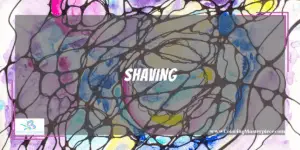Adult coloring in coloring books can be regarded simply as a comfortable pastime that requires no special techniques. But after you have spent some time coloring, you might want to improve your coloring techniques. As you read articles and watch various videos, you could feel a bit overwhelmed by the number of advanced techniques possible.
Order and direction of color application

Coloring can be done with crayons, pencils, soft chalk pastels, oil pastels, marking pens, or even powders or paint. Regardless of the medium, the order and direction of color application are an important part of any picture. This is the way it works:
- Apply light colors first.
- Pencil, crayon, or marker strokes need to be applied in a consistent direction. For example, when coloring the sky, the strokes should be applied in horizontal strokes across the page. When coloring something round, the strokes should follow the contour of the objects. Zigzag or swirling patterns can be emphasized using the stroke of the medium.
- Make a cube or rectangular object look three-dimensional by making the color strokes go one way on one side, and then in a different direction on another. Just keep them consistent on the plane.
- Apply dark colors last, feathering them in to avoid hard edges except where a hard edge is desired.
The pressure of application
Beginning colorists of all ages tend to want to press down hard on crayons, color sticks, colored pencils, and even felt-tipped pens. In every case, a light application of color is best. If a darker color is desired, it is easily achieved by going over the area again using the same light touch. A light application also allows layering to mix colors. Not every medium will mix on the page, but oil-based pencils and pastels can both be easily mixed and so can wax-based colored pencils and soft chalk pastels. Felt-tipped marking pens do not mix well on the page, but can be applied so the color mixes visually. Markers should be kept tightly capped when not actively in use, and should always be applied with a light hand to avoid ruining the tips.
Highlighting
Too often, beginning colorists and new artists try to add highlighting last. But if you follow the rule of applying light colors first, that means that highlights need to be applied early in the coloring process. Highlights often go places like the ridgetop on a roof, the forehead or nose on a human, or the glint in the eye of any human or creature. They can simply be a part of the page that has been left blank or they can be a light color, such as white, cream, or yellow. Depending on your general color palette, you can even use a light tint of whatever shade you are using for shadows.
Shading
The beginning colorist tends to apply color in blocks that are defined by the coloring picture. But amazing effects can be achieved, even with a simple, child’s coloring book, simply by using shading. When you are applying shading, first consider the light source in your picture. Even an abstract pattern can have a point of light source. Once that is decided, you want to keep your highlights or light colors on the lighted side of the object and place shadows on the backside. The darkest shadows should be in areas where the light will not reach, while areas in between the highlight and shadow should have graduated levels of the basic color – sometimes. With that said, shadows are rarely black. They are almost always darker colors of the overall color, or they can even be a different color altogether. Red often makes good shadows, and so does green.
Blending
You can get some amazing colors by blending an ordinary set of 24 colors of whatever medium. With that said, blending should be approached with caution. If you try to apply too many layers of different colors, or if you scrub at an area too hard with a brush, the colors can end up being muddy. Blending is best done with gentle strokes that allow some of the under layers of color to show through rather than trying to mix the colors. Blending medium can be applied using watercolor techniques and will produce some amazing effects. But you need to be careful not to let the moisture pull in colors from areas that you do not want to actively blend.
Layering and burnishing
Layering and burnishing go together, and exactly how you do it will depend upon the medium you are using. This technique is frequently used with colored pencils, where a light color is applied, and then progressively darker colors or progressively darker application of the same color is used. Burnishing is usually done with a lighter color or with a colorless blending pencil that is rubbed over the top of the layered colors, evening them out or feathering them for better effect.
Shaving

This is an interesting technique that can be done in conjunction with using a craft knife to sharpen your colored pencils. Instead of discarding the shavings from sharpening the pencil, save the shaved dust from the color core. Dust it over a specific area of your picture, and use a brush dampened with blending medium to lightly work it into the background color. The technique can also be used with soft chalk pastels but does not work with oil pastels.
Lines and Dots
When you are coloring, it is not necessary to cover all parts of the page. You can let some of the page color show through as part of your picture. This works especially well if you are drawing on black or colored paper because you can avoid some of the effort of producing a colored area by using an appropriate color. Parallel lines are called hatching. If they follow the form of an object, they are called contour lines. Cross-hatching is exactly what you might expect: parallel lines that go across the hatching. Originally developed for use with stick pen and ink, this is an excellent technique for creating colored shadows. Carefully placed colored dots can also create a shading or even a tinting effect. They are extremely effective when using felt-tipped marking pens.
Learn more tips HERE.
Scraping/Scratching
You can produce some exceptionally interesting effects by creating layers of crayon, pencil, chalk pastels, or oil pastels, then scraping away some of the colors. This technique does not work with ink. By scraping away some of the colors, you can develop definitions in pictures that are made with pastels or blunt crayons, both of which are notorious for being difficult to use with precision. You can also scrape away wax or oil medium, then come back over the area with a watercolor wash. The watercolor will color the exposed paper, but not the waxed or oiled areas.
Impressing
(Lines in paper, rubbings). Depending upon how you look at it, this is either an extremely elementary technique or an advanced one. A simple version of it is to place a textured item beneath a page, then rub a crayon, pencil, or pastel over the area revealing the texture. A more advanced version of this is to place a heavily ribbed leaf or similar item under a thick piece of art paper. Rub the paper with something firm that has a bit of “give” to it such as a piece of wood or a stiff tortillon. This will transfer the shape of the ribs to the paper. Next, trace over the rib shape with a white wax or oil pencil. Finally, apply a light wash to the area. The ribs will stand out. Similarly, you can do this with a page, then color across it lightly with a crayon, and the impressed design will appear.
Learn more with my free adult coloring eBook and sign up for my email newsletter HERE!
Disclaimer: The information provided by ColoringMasterpiece.com (“The Site”) is for general informational purposes only. All information on the Site is provided in good faith, however, we make no representation or warranty of any kind, express or implied, regarding the accuracy, adequacy, validity, reliability, availability, or completeness of any information on the Site. Under no circumstance shall we have any liability to you for any loss or damage of any kind incurred as a result of the use of the Site or Reliance on any information provided on the Site. Your use of the Site and your reliance on any information on the Site is solely at your own risk. This blog post is for educational purposes only and does not constitute legal advice. Please consult a legal expert to address your specific needs.
Terms and Conditions: https://coloringmasterpiece.com/terms-and-conditions/
